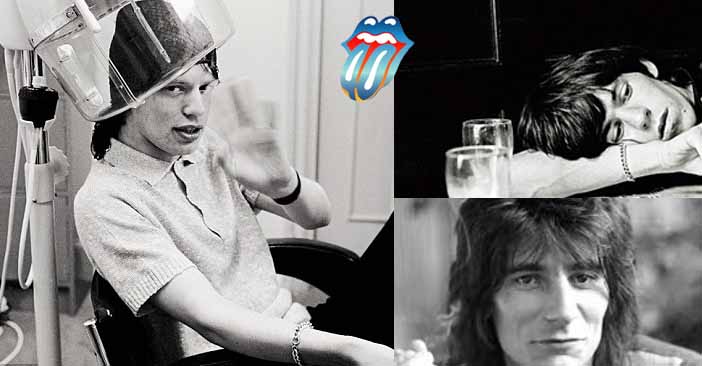
It was late afternoon on December 6, 1969 when a helicopter dropped the Rolling Stones into the maelstrom that was "the Altamont concert". (abc.net.au)
As Mick Jagger moved through the crowd, a young man rushed at him and punched him in the face, screaming, "I hate you, I hate you." It was a sign of things to come.
It's hard to know precisely what the Rolling Stones thought might happen when they invited 300,000 people to a "free concert" at the Altamont Speedway.
East of San Francisco, it was remote, inhospitable, with few facilities. Security would be provided by the Hells Angels.
Mick Jagger loftily suggested the gathering would "create a microcosmic society that would set an example for how the rest of America can behave at large gatherings".
How wrong he was, unless accusations of murder and mayhem were his template.
Four people died, including a young black man named Meredith Hunter, killed by a knife-wielding Hells Angel just a few feet from the stage where the Stones were playing.
In the immediate aftermath of Altamont, many were blamed, including the speedway owner, the promoter and the Hells Angels.
Asked about it later, Jagger said "it's just so horrible" — and he was right — but according to a new book, Rolling Stones '69 by Patrick Humphries, Altamont was the logical conclusion to a year that saw the band overwhelmed by its own arrogance, obsessed with money, while devouring anyone who came within its orbit.
The year didn't start well.
Many thought the Stones had lost their mojo. They'd been off the road since 1966.
Three film projects they'd embarked on had ended disastrously: Rock and Roll Circus, filmed in 1968, had been abandoned because they had played so poorly; Performance, starring Jagger, was banned; their collaboration with director Jean-Luc Godard on the film One Plus One had been panned by the critics.
To make matters worse Keith Richards was now a heroin addict. Worse was to come.
For anyone who'd managed to sit through the Godard film, one thing was clear.
Brian Jones, the man who'd founded the band back in the early sixties, was now a drug-addled shadow of his former self.
During recording sessions for their upcoming album Let It Bleed, he asked Mick Jagger what he could play. (to reed the full article click here)
Recently The Rolling Stones book: "50" has been made possible by privileged access to superb reportage photography from the Daily Mirror’s archive most of it are unseen.
Rej’s personality and striking work instantly resulted in him becoming close to the band and, more specifically, Brian Jones who he became close friends with during the tour. Having initially being tasked with a job by Ekstra Bladet, Rej quickly became part of the Stones’ entourage and is widely credited as being the person who introduced model Anita Pallenberg—who became the lover of both Brian Jones and Keith Richards—to the band. (Faroutmagazine)

Rej once wrote of his experience capturing the band in their home: “After Brian had stayed with me in Copenhagen, I went to stay at Brian’s rented house, 14 Elm Park Mews (actually a mews house in Elm Park Lane) in Chelsea, when he had moved into in March 1965.”
He added: “I stayed in Brian’s home on all my visits to London over the next year. I had my own key, my own room and bathroom, and came and went as pleased. As often as not there were fans outside in the street but not on this particular occasion.”
This photographic autobiography features images selected by the band accompanied by their own words. The photographers include Gered Mankowitz, Jean-Marie Périer,Dezo Hoffman, Michael Cooper, Terry O’Neill, Bent Rej and Philip Townsend – the photographer for their first ever shoot. Some of the most rare and interesting Stones’ memorabilia has been specially photographed for this volume.
This remarkable book is the band’s thank you to their fans all over the world.
Bands can be strange, personal, fragile, temperamental and territorial things, more intense than marriages. Whatever brings you together when you’re 15 or 16 is not the same thing that holds you together when you’re 20 or 25. Or 30 or 40 or 50 or 60.
There’s hard work and then there’s chance — as in roulette, you need a healthy dose of pure luck to win. “Mick Jagger,” Philip Norman’s new biography, captures this part of it beautifully. “As 18-year-olds, waiting among the diurnal wage slaves at Dartford Station, they could have not looked more different.
Mike” — he wasn’t Mick yet — “was a typical middle-class student with his beige wool cardigan and black-, purple-
and yellow-striped L.S.E. scarf. Keith, t
hough also technically a student, did his utmost not to resemble one with his faded blue denim jeans and jerkin and lilac-colored shirt.”
The catch here, like a lucky spin at roulette, is that Jagger was carrying two albums he had just received from Chess Records in Chicago: “The Best of Muddy Waters” and “Rockin’ at the Hops,” by Chuck Berry. “The upshot,” Norman writes, “was that when their train pulled in, they decided to travel together.” They most certainly did. (full article here at The N.Y. Times)
